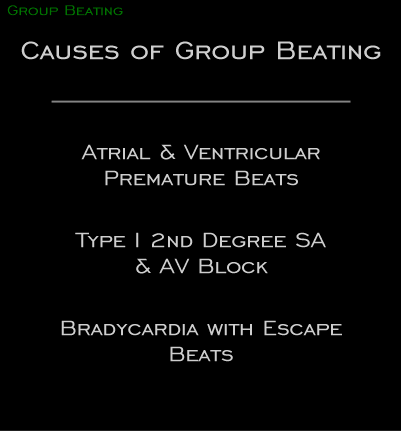
The presence of group beating should always raise the suspicion of type I 2nd degree AV or SA block with Wenckebach periodicity. However, this is not the most common cause of group beating. Atrial and ventricular premature beats, in patterns of bigeminy, trigeminy, quadrageminy etc constitute the most common cause of group beating. The atrial premature beats may be conducted or non conducted and the ventricular premature beats may be manifest of concealed.
